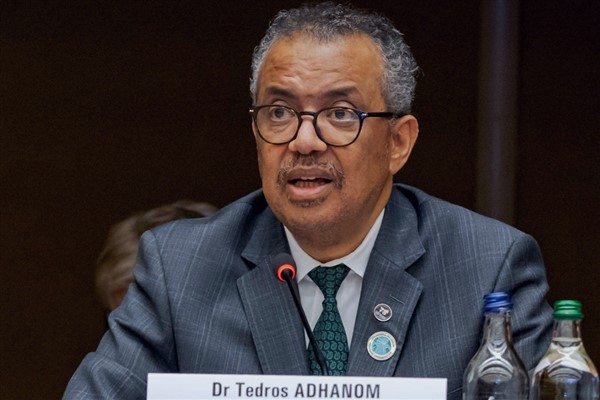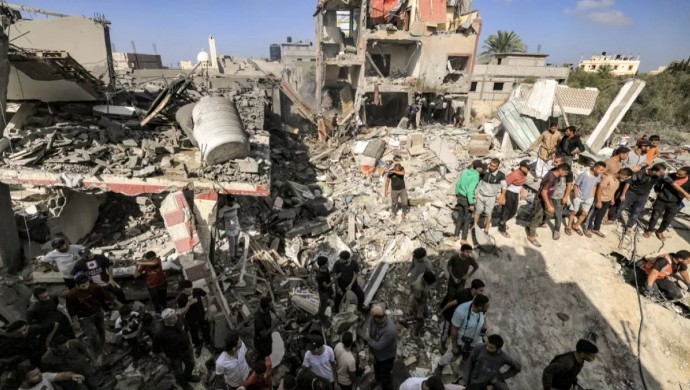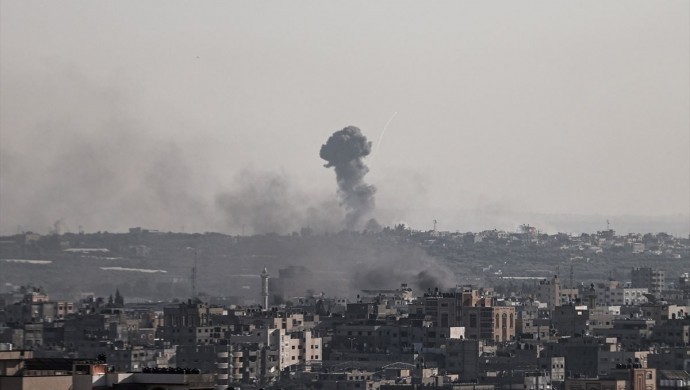Inflation inertia and new dynamics, The marginal influence of the Russian issue, Inflation carried over from past factors
According to the March inflation data announced by TURKSTAT, the annual CPI increase was 61.1%, the highest of the post-2002 period. While the dominating factor as of March seems to be energy prices and the related spillover effect, it is clear that if there is no change in dynamics in the following months, inflation will increase even more or, at best, it will remain high in the current band. In this course, it is necessary to analyze the real reasons for the decrease in inflation and to approach the issue of the temporaryness/permanence of inflation. Developed country central banks made the erroneous view that inflation was temporary last year, and as supply chain breaks became much more evident with the Russian crisis, they are rapidly turning to rate hikes to pick up the situation. The validity of the CBRT's view that inflation is dependent on temporary geopolitical factors and whether a disinflation process will be entered into as envisaged should be approached from this point of view.
Although we can attribute the effects on inflation in March to the rising commodity prices associated with the Russian crisis, we would like to point out that inflation started to be a problem long before that. Inflation, which reached 54.4% in February, has accelerated significantly since the last quarter of last year. There are factors such as imported energy, input cost effect, PPI-transferred CPI effect from input costs, weak lira causing all these spreads. This, combined with the break in global supply chains, had a multiplier effect on us. At the same time, destabilizing inflation expectations caused past inflation to be effective in creating new inflation. The following period may be the scene of an environment where these factors, combined with current factors, may adversely affect price stability. If we consider that the Russian crisis also created an important uncertainty in energy and raw material supply, we can say that we will have much more difficulty in terms of inflation. In this environment, although inflation will decline towards the end of the year due to the base effect, it is estimated to be close to 50%.

Comparison of CBRT policy rate and CPI inflation Source: Bloomberg, CBRT, TURKSTAT
The interest rate, which the central bank has been holding for three months, probably won't change anytime soon. Adjusted for inflation, the rate is currently at minus 47.1%, far behind all peer markets. As the price stability phenomenon is heavily transferred to financial instruments, we do not expect an rate hike at this stage. We think that this threshold is kept very high in terms of achieving the growth targets of the economy management. However, if the financial market factors are compelling and the exchange rate continues to rise while the inflows in FX-linked deposits continue, it will be difficult to maintain the current policy. The deterioration in the energy balance and a possible decrease in tourism originating from Russia show that a foreign exchange inflow due to the current account surplus this year should not be trusted too much.
At this point, factors such as the Fed, geopolitical risks and high oil prices seem to be the most important challengers of price stability, and the negative real return position of the lira may increase the sensitivity to such external risks. We would like to state that the lira was the currency of the developing country that lost the most value in March as well.
Currency protected deposit accounts, launched on 20 December, reached a size of 691 billion TRY, according to BRSA data for the week of 25 March. Although the details of how many are FX-TRY conversions and how many are direct TRY accounts in the BRSA data, the statement of the Ministry of Treasury and Finance reveals that 54% of this breakdown is conversion from foreign currency and 46% is direct TRY account opening. The dollar rate of 14.21 on March 4 indicates a periodic rate return of 6.84% as of December 21. When we consider the average rate after 20 December as the average FX-linked deposit account opening rate, we calculate that the periodical 7.7% exchange rate increase brought a cost of 10.9 billion TRY to the Treasury and 12.9 billion TRY to the CBRT.
The Phenomenon of Geopolitical Risks in Emerging Markets
Factors that differentiate EM rates
Russia factor
Fed-induced effects
For most central banks, the focus is on tackling uncomfortably high inflation. This is the focus of central banks such as the Fed and ECB, as well as developing countries. Naturally, developing countries have to both follow the interest announcements of the big central banks and keep their economic buffers, especially the reserves, against external waves like Russia. The Fed will likely raise rates more than previously anticipated, possibly 6 times this year, and it is unclear when and how the Russian crisis will be resolved.
Given the aggressive Fed tightening, there will be a stronger dollar outlook against most emerging market currencies. The developing country class may remain under pressure, partly due to the tightening of the Fed and partly due to the reaction of local markets to geopolitical risks. Russia-Ukraine developments intensified compared to a month ago and are the main drivers of financial markets in addition to central bank activity. While the regional proximity to the war and the economic costs arising from the refugee movements will put more strain on the financial balances of Eastern Europe, some Latin American countries, which are commodity producers, may gain some advantage from this situation. Turkey is by no means included in a monetary tightening equation. Russia, on the other hand, is out of the class due to sanctions, the ruble is not tradable even though it has stabilized, and the blocked reserves of the Central Bank of Russia make it almost impossible to resolve a financial volatility.
Over the past month, the United States and its Western allies have imposed harsh sanctions against Russian organizations and Russian individuals. Several Russian banks have been removed from the SWIFT payment system. The Russian central bank's foreign currency reserves held abroad are largely frozen and inaccessible. The United States has banned the import of Russian oil, and the United Kingdom has announced that it will phase out Russian oil imports over the rest in 2022. Many multinationals have either significantly reduced or abandoned their Russian operations. We think the United States can push ahead with sanctions until it defaults on Russia and forces it to settle for peace. However, there is little indication that Ukraine and Russia will be able to achieve peace. It is stated that a possible Putin-Zelensky meeting may be soon.

Return positions of developing countries adjusted for inflation (Policy rate-inflation=real interest) (Source: Bloomberg)
Fed Advances Policy Tightening
50 bps interest rate increases
Take action against inflation
Long-term economic projections
Yield curve flattening and recession risks
The Fed has started rate hikes based on inflation and is likely to continue with a 50bps scale at one or two near-term meetings. Supply chain breaks caused by the pandemic were underestimated last year, referring to the volatility of inflation. This year, when the central banks became aware of this illusion, the war between Russia and Ukraine broke out and the supply disruption became more profound and inextricable, now with the effect of sanctions.
As a result, it is very possible that these inflationary phenomena, which affect the planning of the producer companies and the spending behavior of the consumers, will lead to a spiral. These factors will trigger inflation on both intermediate and final goods, while the labor market progresses, more wage increases will be demanded, and new inflation will occur over demand/operating cost. In anticipation of an increase in prices, consumers will cause fluctuations in demand by making early consumption, and prices in an increasing trend will distort expectations for the future.
The Fed wants to prevent these phenomena. In doing so, it will face the risks of past “underestimating inflation” behavior. There is a possibility that the excessive monetary tightening will result in interest rate hikes and bring the economy into a recession cycle. The situation reflected in the yield curve is also related to this. The gap between the 2-year and 10-year bond yields has regressed to the recession thresholds, and the 2-year bond yield was even higher than the 10-year bond yield for a while. Since the 3-month - 10-year spread, which the Fed looks at more, shows a divergence, there is no recession prioritization with the Central Bank at the moment. Market professionals, on the other hand, are more concerned about the recession phenomenon.

Yield curve and projected GDP growth… Source: Bureau of Economic Analysis, Federal Reserve Board, Federal Reserve Bank of Cleveland, Haver Analytics
The Fed is not the only developed country central bank in this tightening phenomenon. The European Central Bank has announced plans to further accelerate its reduction in bond purchases as the pace of monthly bond purchases slows to 20 billion euros by June. As a matter of fact, after a short time quantitative expansion will come to an end. In the process towards the end of this year, it is seen that there is an open door for the ECB to make its first rate hike. This is a situation that increases the risk of recession due to monetary tightening for the region, which has a more limited economic potential in terms of being directly susceptible to the Russian crisis.
Kaynak Tera Yatırım
Hibya Haber Ajansı
























